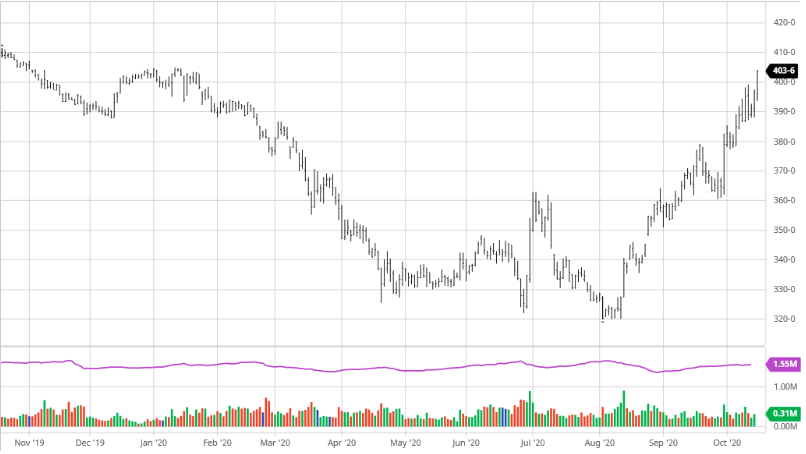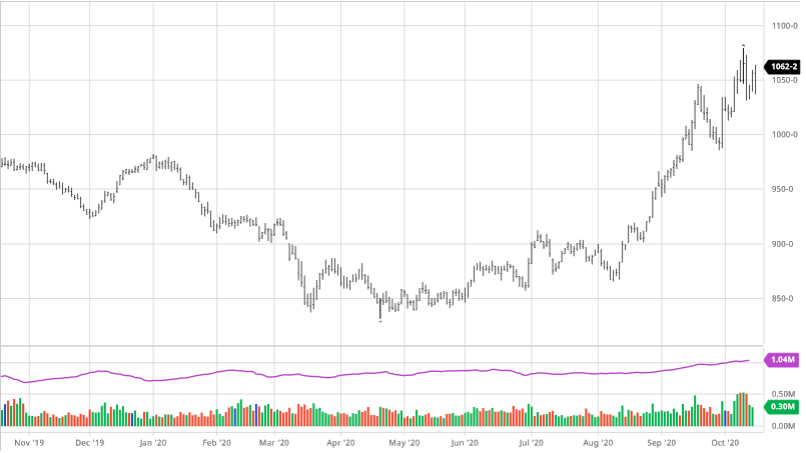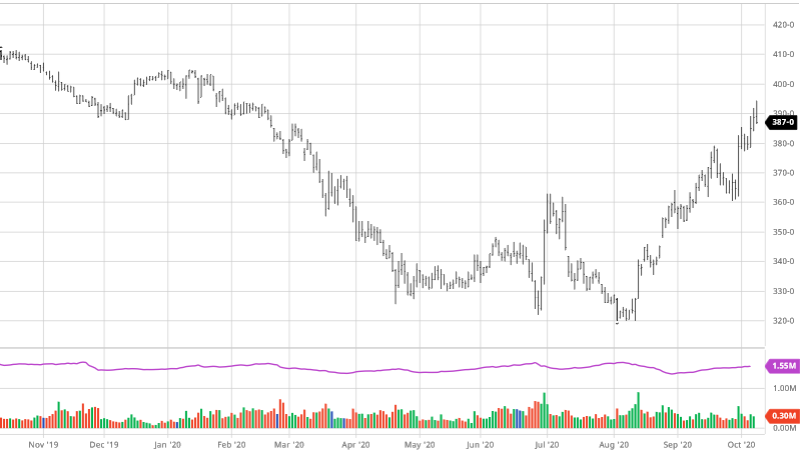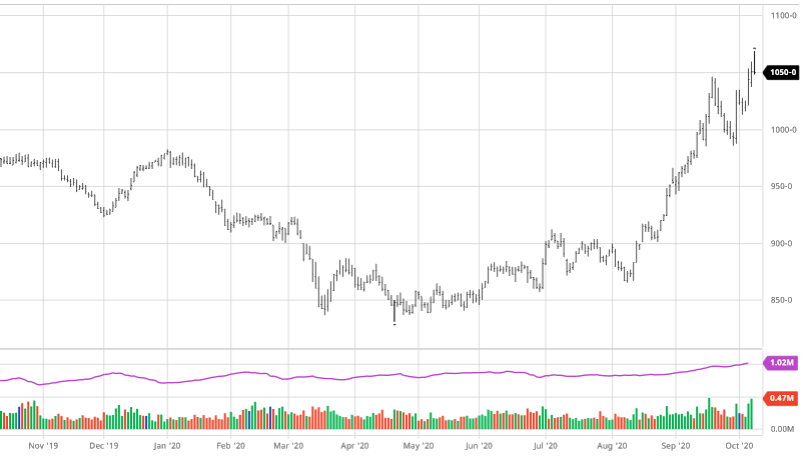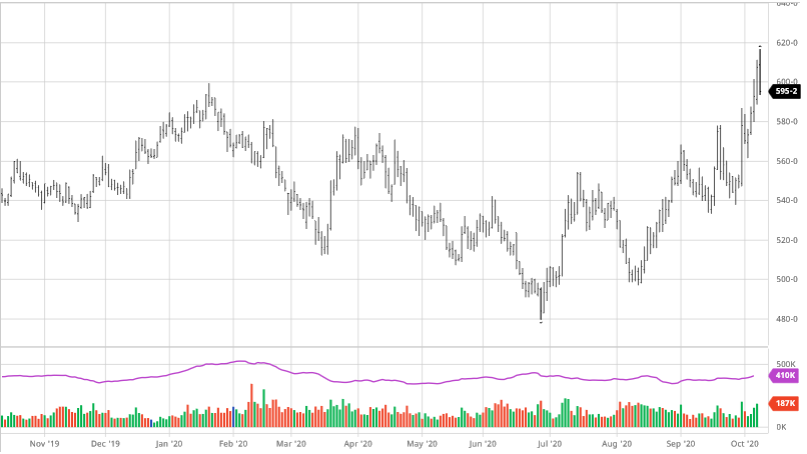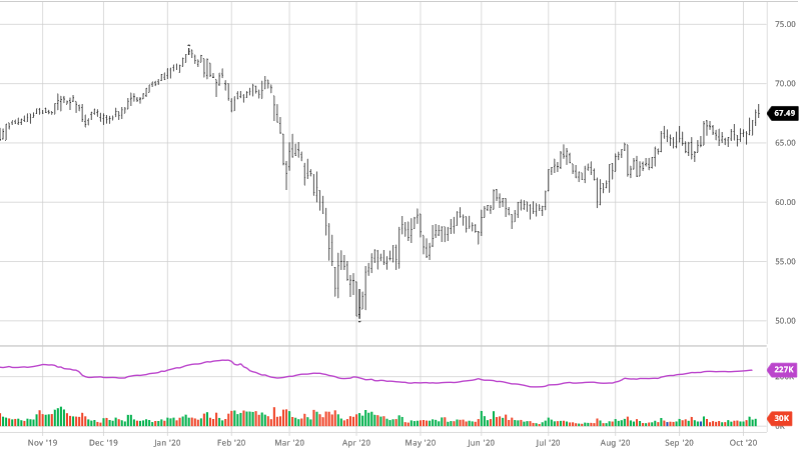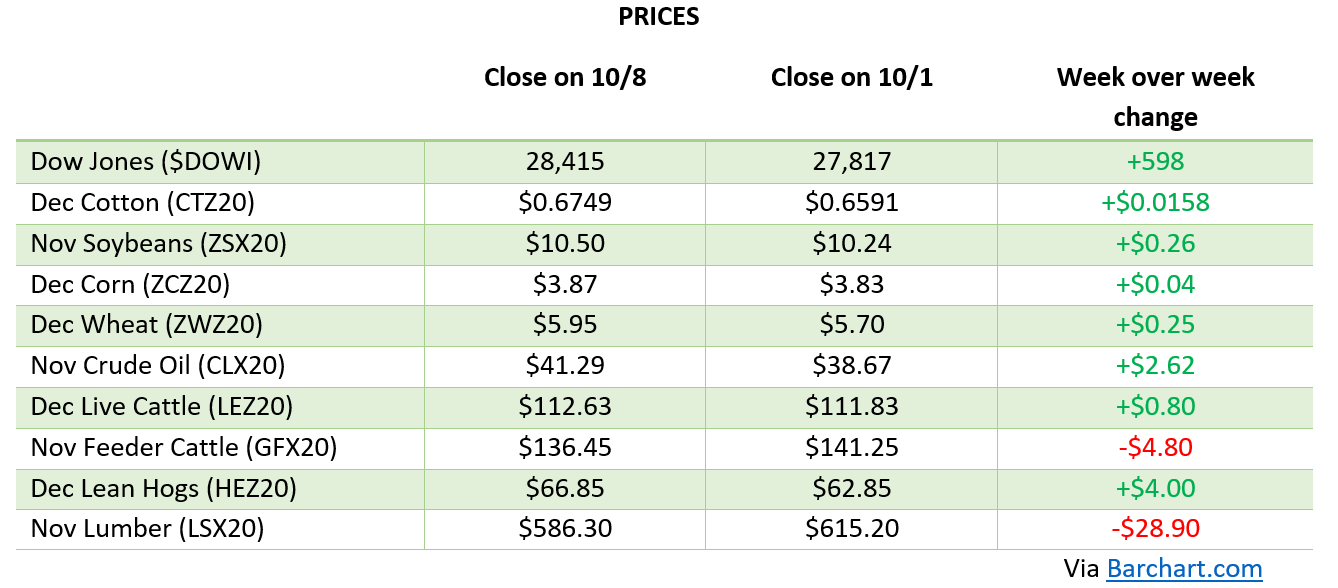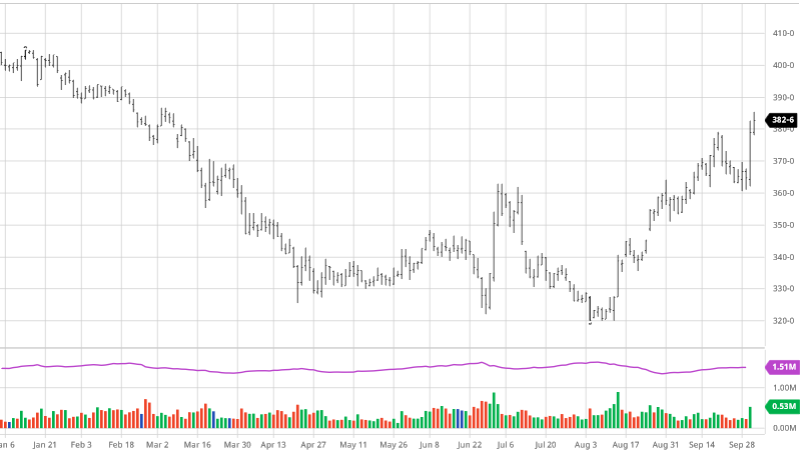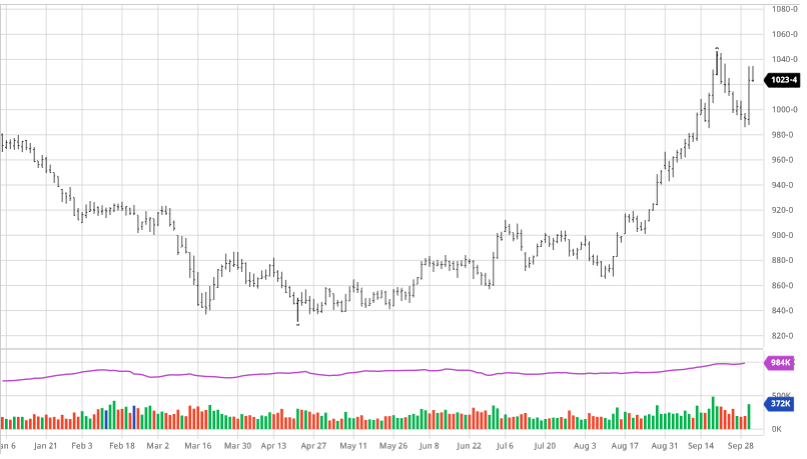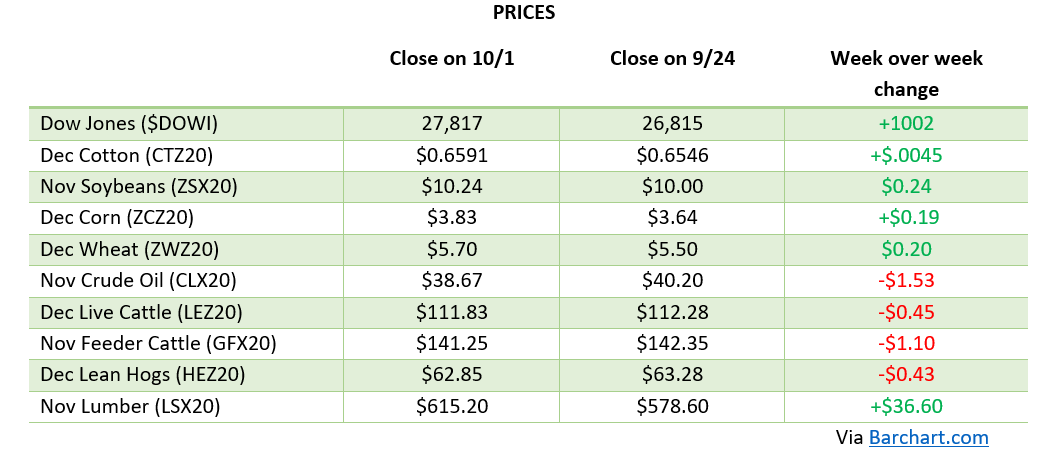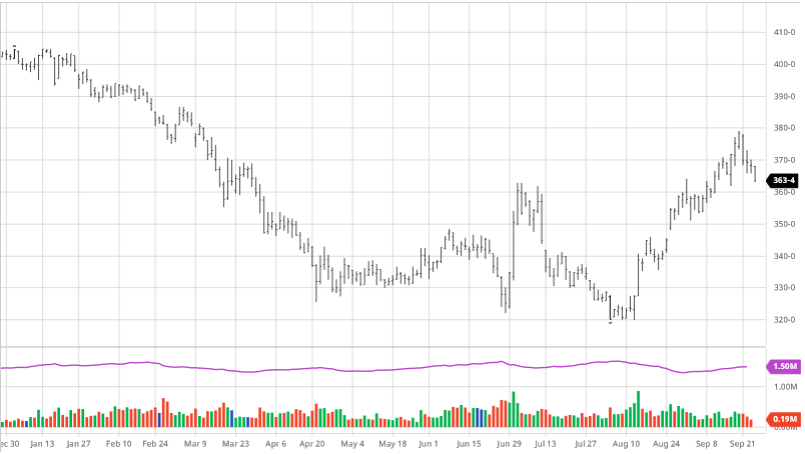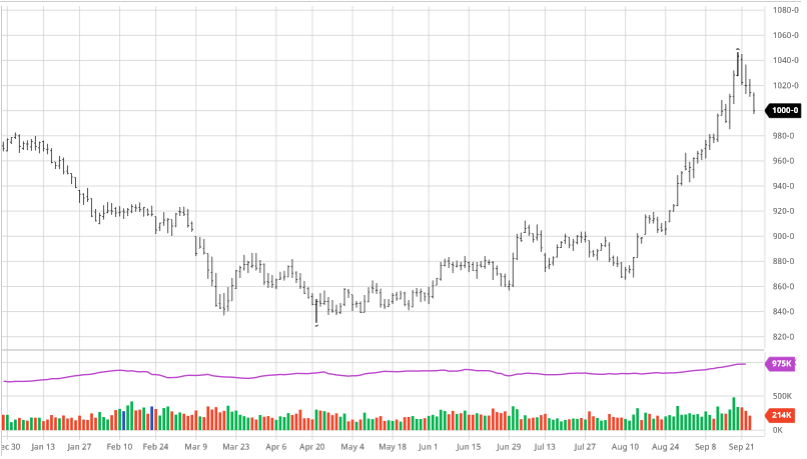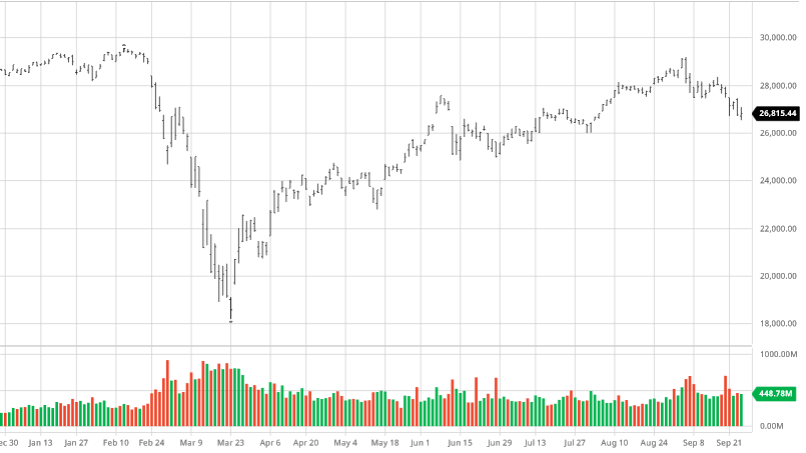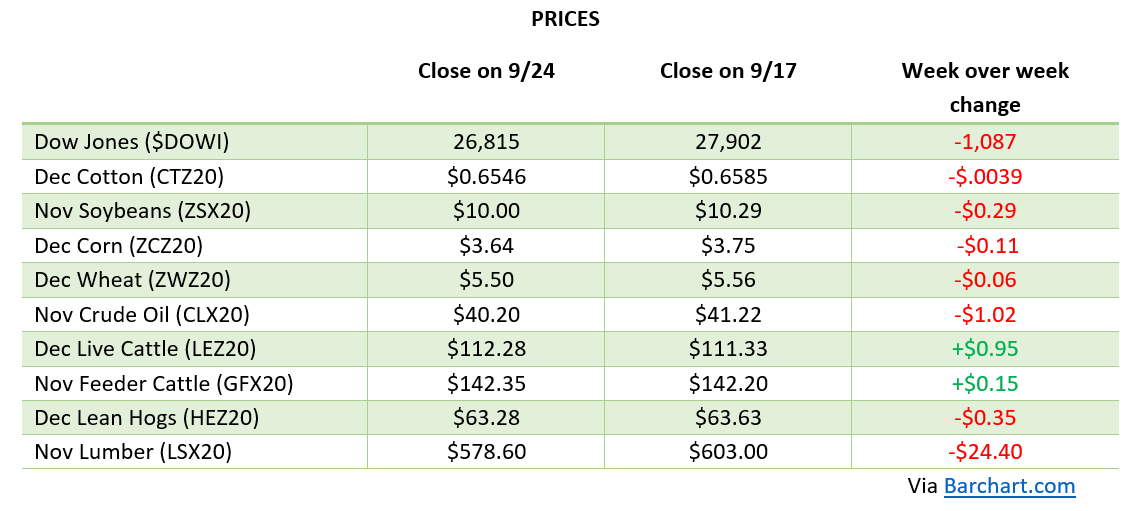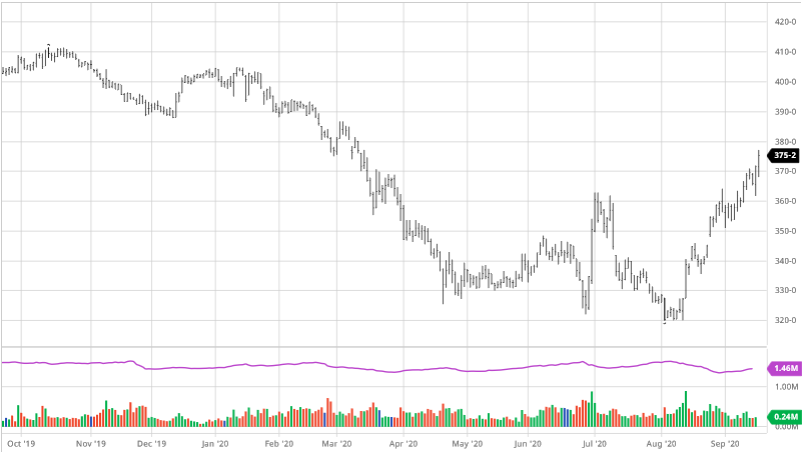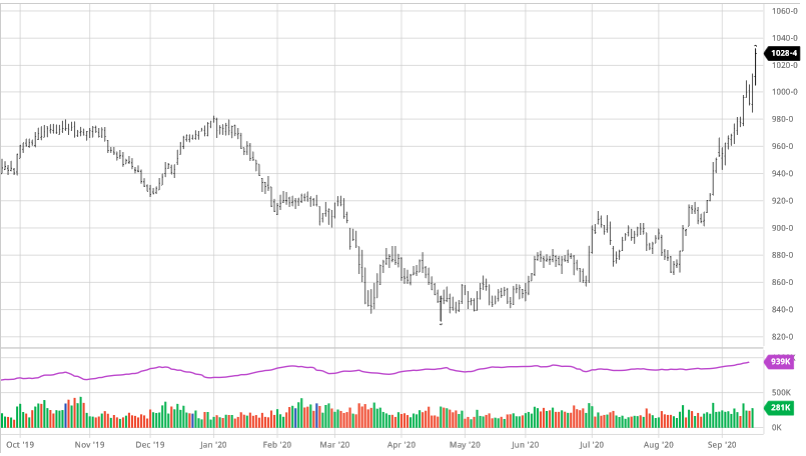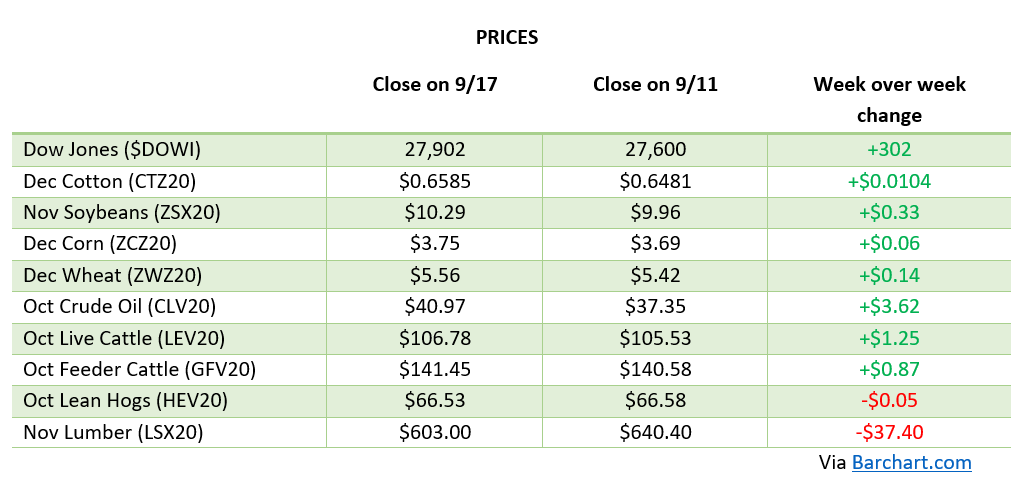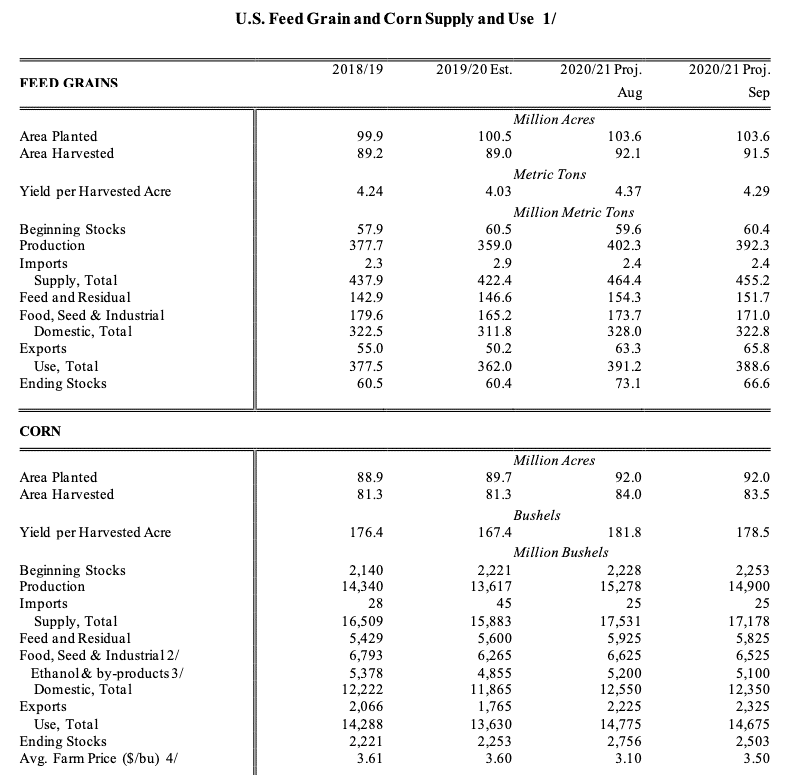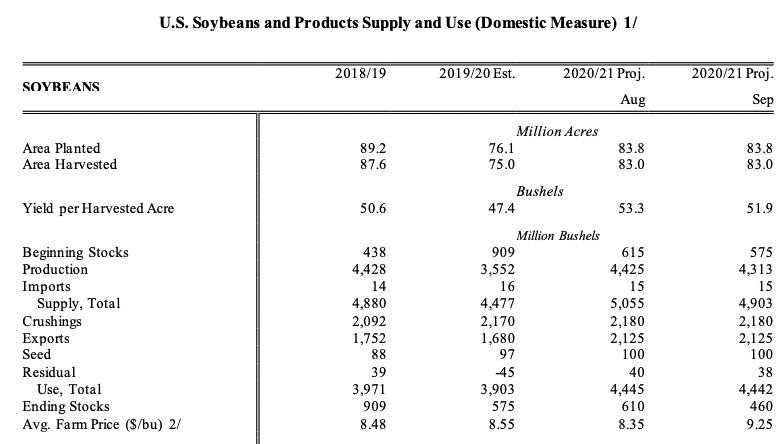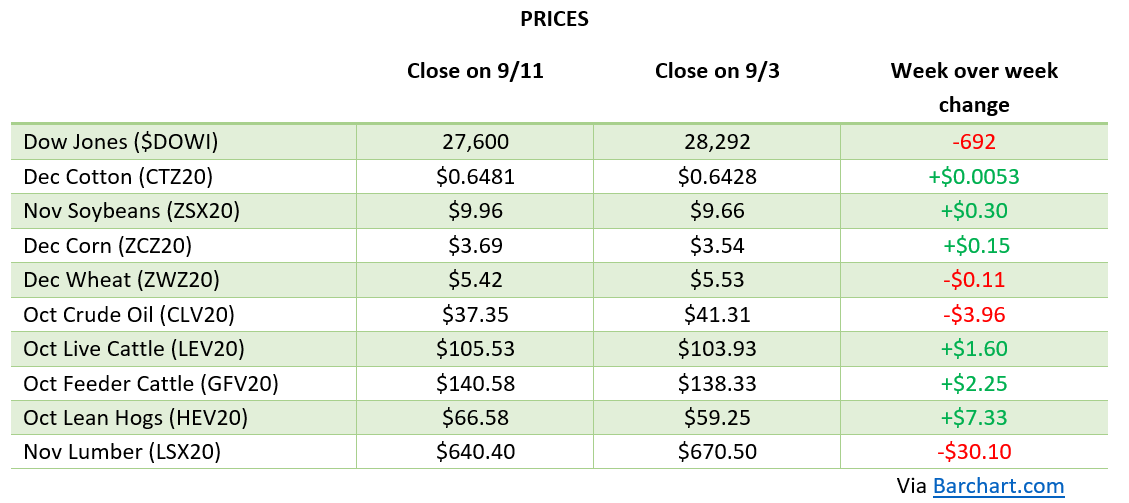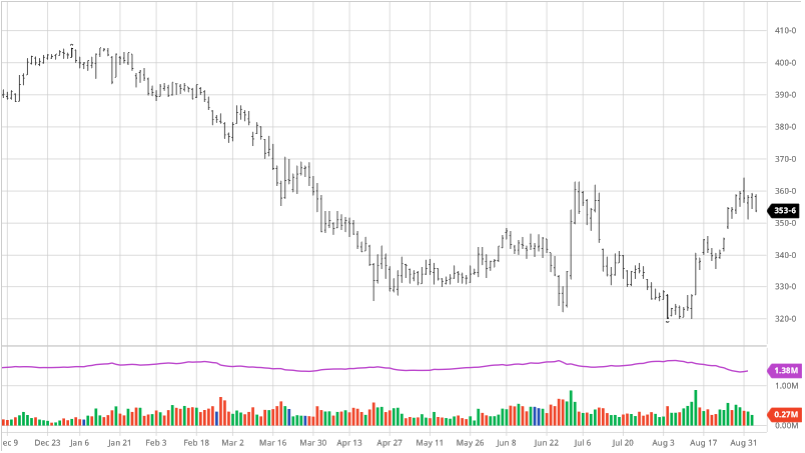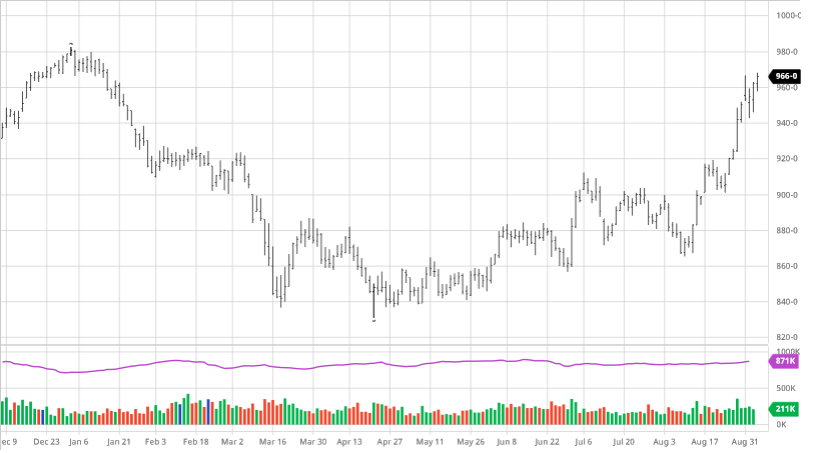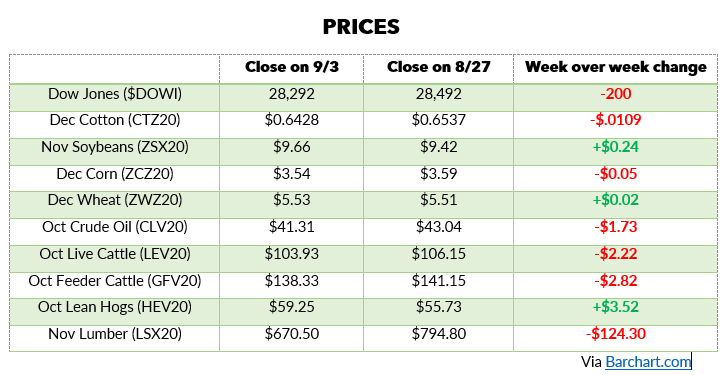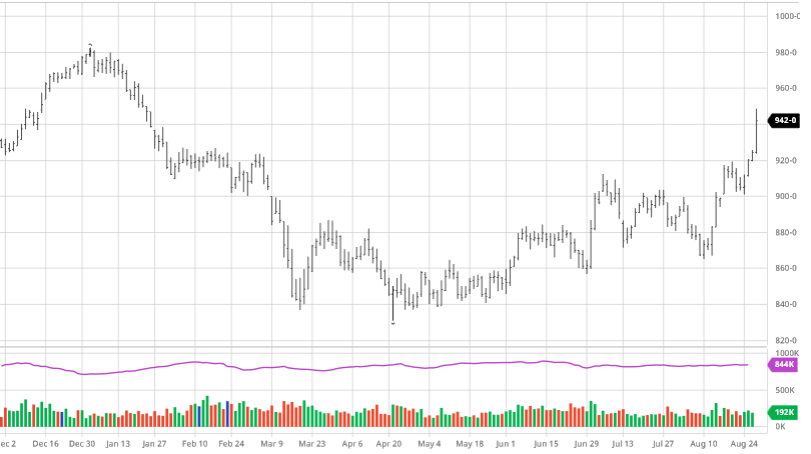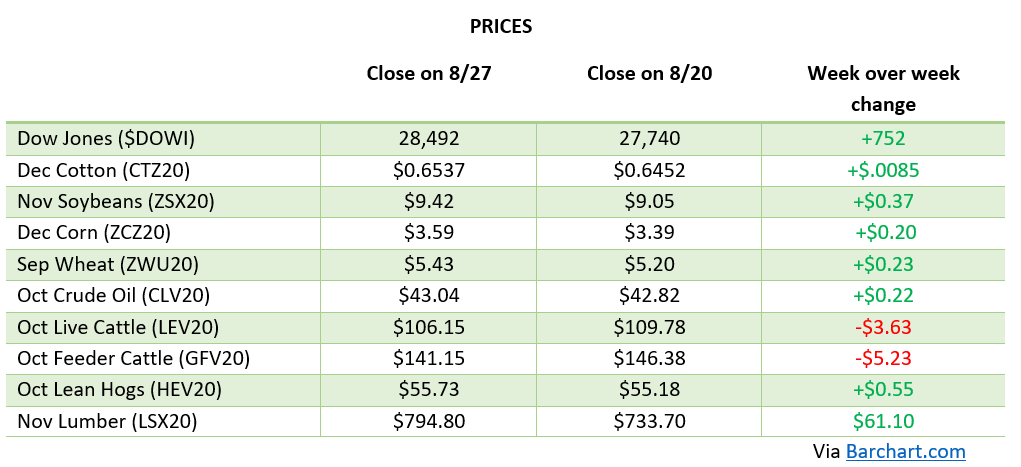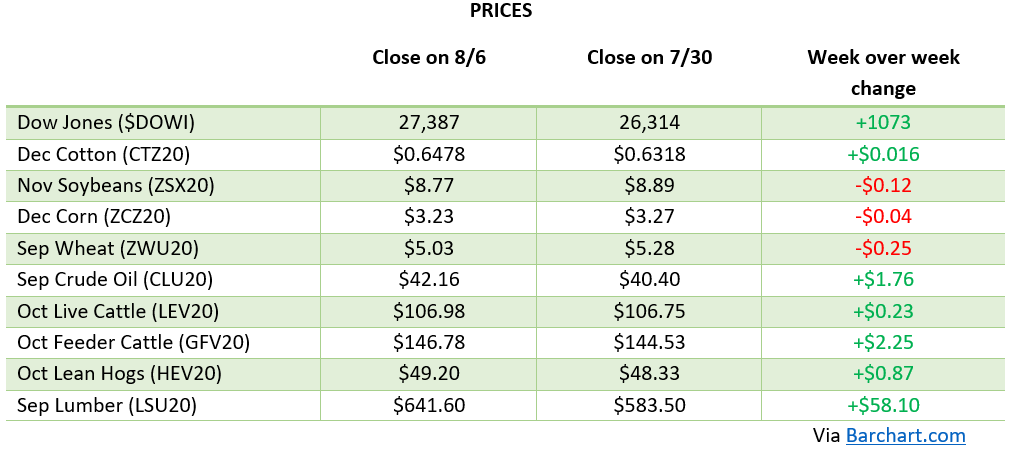
Corn has continued its momentum up following Friday’s USDA report despite a hit to prices to start the week. Corn closed above the $4.00 mark for the first time since January on the Dec’ 20 contract (see chart below). This year has been different for many reasons but having the highest prices of the year come during harvest definitely adds to it. The “harvest lows” look to have been in August with the run up of 80 cents/bu, giving farmers hope after depressed prices all spring and summer. The USDA report from Friday came in with a yield estimate of 178.4 BPA and lowered the 2020 harvested acres to 82.5 million acres when estimates had it at 83.321 million acres. US corn harvest came in at 41% complete this week with favorable weather over the next two weeks to keep it going. Chinese purchases continue to roll in as they continue buying after their holiday break. Brazil’s weather outlook has improved in the short run to get some moisture but after this rain the long term picture remains unclear as Argentina looks dry as well.

Soybeans rallied this week after gains last week and after the USDA report. Markets came down Monday on funds taking profit but have slowly come back over the last 3 days. The factors moving the market have been the same for the past several weeks. The USDA report from Friday estimated yields to be 51.9 bu/acre and 290 million-bushel stocks, almost 80 million below estimates. Harvest is 61% complete and looks to be full steam ahead with the promising weather across the US. As more uncertainty has come up this week with as China’s Premier Xi criticized the US in a speech regarding the US’s relationship with Taiwan. As the election nears US and China’s relationship will be stressed. What this will do to the Phase 1 agreement is an unknown, but China continues to need our beans which is helpful in the long run.

Cotton prices rallied this week as flooding in India caused damage across large growing areas and possibly damaged up to 1/3 of the country’s cotton crop. With India’s cotton crop damage and Pakistan’s ongoing crop issues look for mills to look to the US for their cotton needs. Looking to ’21, if soybean and corn prices stay strong into the spring there will be a sizeable amount of cotton acres that shift to corn or beans tightening the supplies. Many experts think that the prices will be allowing for future demand to help prices as well.
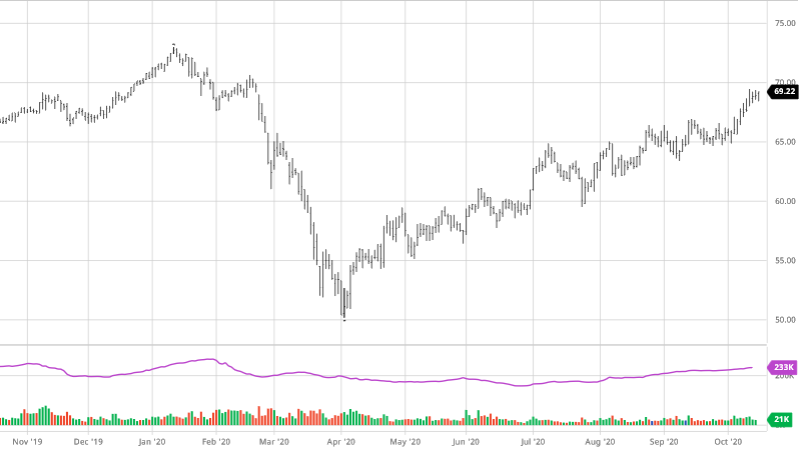

Dow Jones
The Dow continues to bounce around as there have been 3 down days after 4 up days. Europe is struggling with a possible second outbreak and the US continues to struggle with Covid-19. Election news and Covid-19 news will be the main market movers as vaccine trials are starting to have issues.
World Weather
The International Research Institute put out a forecast for the next 3-months for South America with expectations of normal rain and temperatures for Brazil with drier conditions for the for southern Brazil and Argentina’s main growing areas. US weather looks great into November for a quick sprint to the finish for harvest. Russian forecasts remain dry into month end which is driving wheat prices.
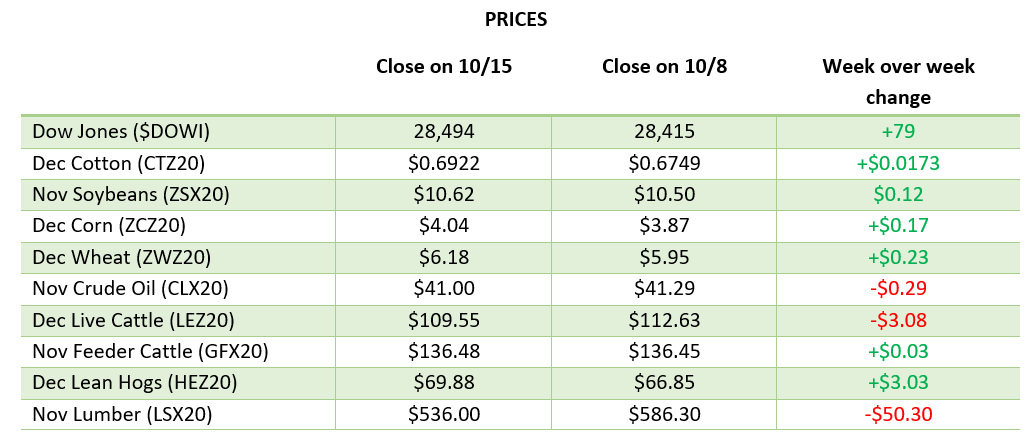
Via Barchart.com


